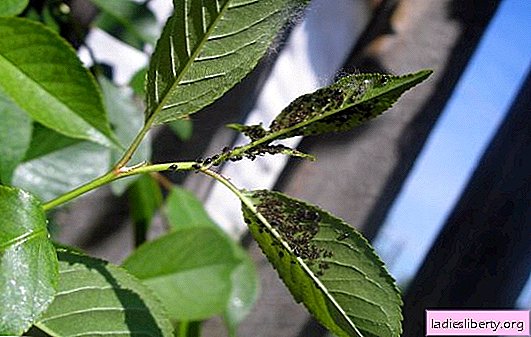
Often lovers of walks among nature or pet owners, who often walk them in the forest, face such a danger as a tick bite.
An arthropod insect can be a carrier of terrible diseases. Immediate treatment at home with a tick bite is required.
Danger of contact with ticks
If a representative of arthropods is found to be firmly attached to the body, it is recommended to contact a medical institution for assistance. But if this is not possible, you must extract it yourself. The sooner first aid is provided, the greater the likelihood that a dangerous infection transmitted by a member of the arachnid class will not penetrate the body.
The difficulty in detecting an arthropod is that it is impossible to feel its bite. The parasite injects an anesthetic into the skin. That is why it is detected only with a thorough examination of the skin or when it increases in size, having satiated to the full of human blood.
A tick that feeds on the blood of a person or a large animal spreads such diseases:
• anaplasmosis;
• hemorrhagic fever;
• Lyme disease;
• tick-borne encephalitis.
Not all insects are carriers of harmful infections. Approximately 80% of ticks are free from pathogens.
If a tick bite was treated at home, but the person began to feel unwell, then a doctor should be visited immediately.
What are the symptoms of a bite?
The tick on the head has special outgrowths called hypostomes, which they attach to the flesh. The body reacts to a tick bite with an allergic reaction. Slight inflammation and redness around the damaged area are noted. Also, a person may not notice a sucking insect on his body from several hours to several days. Itching appears if the arthropod is saturated and increased in size many times. The first obvious symptoms of contact with the animal:
• body temperature rises to 37-38 degrees;
• heart beats more often;
• the pressure drops;
• lymph nodes are enlarged;
• itching occurs.
Less vivid signs: chills, drowsiness, various nervous reactions, body aches, nausea, vomiting, weakness, headache. What kind of symptom will appear depends on the individual characteristics of the affected person and the number of sucking insects.
Tick bite: home treatment
What to do if a tick is attached to the skin? Firstly, no need to panic. Carefully unhook the sucking insect. Secondly, the bite site is treated with hydrogen peroxide, chlorhexidine, brilliant green or iodine. It is recommended to leave the tick body and contact a special organization to check the sample for infections. If desired, tests are performed that determine the infection with encephalitis. It is also advisable to take drugs that kill the infection when infected with a specific disease.
The body of people who are allergic can give a powerful response: swelling of the face, muscle pain and difficulty breathing. In this case, antihistamines should be given to the allergic person: Claritin, Suprastin or Zirtek. You should call an ambulance and ensure the flow of fresh air into the room.
Proper, safe and effective removal
In order to treat the affected area, you should first remove the tick. Use protective equipment (napkins, gloves) so that pathogenic bacteria do not fall into your hands. They penetrate the blood through microscopic cracks in the skin. To capture the tick, forceps or tweezers are required.
Phased extraction:
1. The cotton pad is moistened with alcohol, gently rubbing the skin around the tick without touching it.
2. Capture the insect with tweezers as close to the skin. When removing, try not to tear off the head and other parts of the body. Tick carefully pulled up. Twisting or rotational movements that do not facilitate removal are not allowed, as the arthropod oral apparatus is provided with spines. Such actions can lead to rupture of the head and mouth, increase the chances of infection in the body.
3. The injured area is cleaned with soapy water or a disinfectant. For several days, they monitor the reaction to a tick bite. Do not squeeze the wound with bandages and plaits.
4. After the procedure, wash your hands thoroughly, clean and disinfect tools.
You can also remove the insect with the help of a homemade "lasso" made of durable thread. The thread is folded in half, thrown over the tick, threaded into the loop and pulled. The parasite is slowly removed counterclockwise by sipping or swaying movements.
Removing the tick with gasoline, varnish, a hot match and other materials is not practical, since the risk of infection in the skin increases. Such procedures provoke the insect to reverse the injection of fluid into the affected area. The likelihood of infection increases. It will also be impossible to take the tick to the laboratory for research.
Tick bite: home treatment and precautions
The body of the tick was removed, but its head remained under the skin? Disinfect the needle with alcohol and remove the remaining body fragments like a splinter. Following the wound is treated with brilliant green or alcohol.
The extracted tick is placed in a glass container and taken to the center of epidemiology, where specialists determine whether it is infected with viruses. If necessary, doctors provide medical care.
The incubation period of many dangerous diseases is 14 days. During this period, you can start therapy and minimize adverse health effects. It is not recommended to wait for the manifestation of vivid symptoms.
Analyzes for the presence of antibodies to the diseases that a person is susceptible to when they are bitten by a tick are submitted no later than a 10-day period. Depending on the results of the analyzes, an immunotherapy course prescribed by the doctor is carried out.
Treatment of a tick bite at home with folk remedies
To wound healing is faster, you can resort to traditional medicine. Chopped onions are spread on cheesecloth and applied to the diseased area. To prevent complications after contact with an insect, take infusions.
• Fruits of the ball-headed muzzle are filled with alcohol, diluted in 2% concentration. Take tincture three times a day before meals. The finished solution is sold in a pharmacy.
• Ingest twice a day, crushed harmonica seeds in an amount of 15 pieces, taken with water.
• The infusion of herbs of garden porcelain is drunk three times a day, 2 large spoons. Recipe: pour a spoonful of crushed mixture of 200 ml of boiling water and leave for 2 hours.
Within 14 days, redness is observed at the site of the bite. It is recommended to lubricate it with tincture of calendula.
Why is it so important to treat a tick bite at home and then contact a medical institution?
Arthropods can cause damage to the nervous or cardiovascular system, joints, lungs, liver, and kidneys. The consequences of a bite of a parasite, which is the carrier of encephalitis, are serious. Variants of the course of the disease.
Easy outcome
• There is an asthenic syndrome characterized by chronic weakness, which lasts up to 60 days. Body functions are gradually restored.
• After a moderate infection, a 6-month recovery is required.
• It is necessary to spend up to 2 years on the recovery period after a severe illness; A form of the disease without paresis and paralysis.
Severe outcome
• Sustainable organic syndrome, damage to motor functions that reduce the quality of life. Symptomatic progression is absent.
• Symptoms with a persistent decline in quality of life are progressing. To exacerbate the situation contributes to overwork, stress, bad habits or pregnancy.
Persistent changes, which are characterized by hyperkinesis and epilepsy, are a reason for disability.
That is why it is so important to provide first aid for a tick bite at home.
Prevention
You can reduce the risk of tick infection with vaccination. It is required for people living in epidemiologically hazardous areas. Forest workers should also be vaccinated.
When walking through the forest or park, it is recommended to use special protective equipment.











